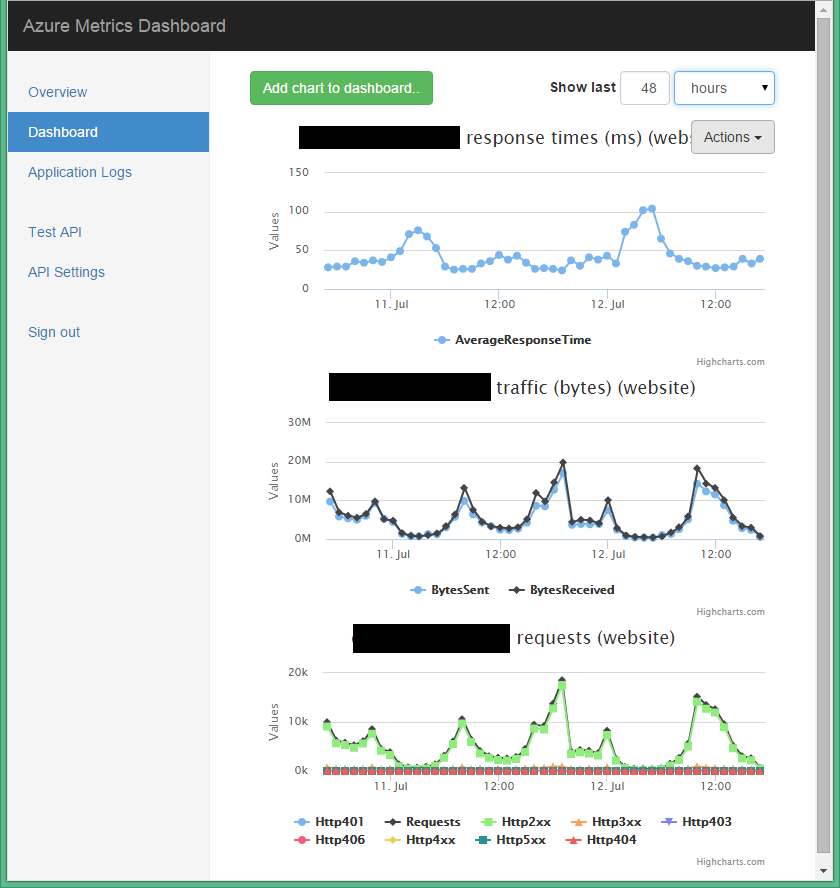For the last couple of months I’ve been working on a little side-project: AzurePlot. Yesterday I put out a big new release, with a lot of features that should make it something that’s useful for others as well. From the readme:
AzurePlot plots metrics from various Azure services. It’s designed to be a better alternative to the native charting/monitoring capabilities of the Azure portal, focusing on usability and performance. It works by accessing the APIs provided by the individual services.
The reason I built it is that I’m kind of disappointed with the Azure portal with regard to its charting/metrics capabilities. Whenever there is a production issue with one of our projects on Azure, gaining insight through the Azure portal is just a big PITA because it’s slow, lacks basic features, etc. Simply, it isn’t usable to do the kind of diagnosis I need to do. So that needed to change.
I’ve used Graphite in the past, and was really happy with that, so at first I wanted to get my Azure metrics into Graphite. That became reality with WadGraphEs. However, to access the data you need to have access to the Azure APIs and that requires uploading a management certificate, giving you wide access to the Azure subscription. I didn’t want that kind of responsibility in my product, so set out to build an intermediate application that you would host yourself, and expose the metrics through an additional API of that application. When building that, I figured it would make sense if that project was also able to render the data. That became AzurePlot.
I’m quite happy how it turned out, currently it can:
- Read metrics data from Windows Azure Web Sites, Web/worker roles, VMs and SQL Database
- Chart those metrics in a dashboard
- Export the metrics through an API for external consumption
To give you an idea what it looks like:

There’s still a lot of work to be done, such as consuming data from more data sources and providing more powerful chart manipulations. I will continue working on that the coming months. Even still, if you’re running on Azure you might find it really useful, so check it out!